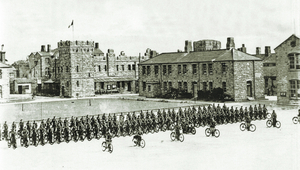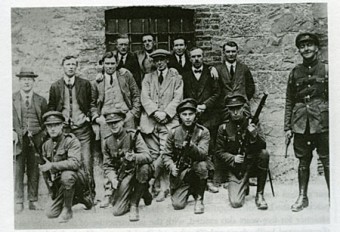Search Results for 'National Army'
3 results found.
Renmore Barracks, a brief history

Because of its strategic location, Galway was always an important centre for the military. The original fort in Renmore was known as St Augustine’s Fort and featured prominently in the 1641 rebellion, after which it was abandoned, the purpose for which it had been built having been accomplished.
Taoiseach to launch book on Mayo’s role in War of Independence
A fascinating new book documenting Mayo’s role in the fight for independence during the early 1900s will be launched by An Taoiseach Enda Kenny this evening, Friday March 9, at Castlebar Library at 8pm. The book, The Flame and the Candle - War in Mayo 1919 - 1924, by Dominic Price, dispenses with the myth that little or nothing happened in Mayo during Ireland’s fight for independence and instead highlights the fascinating story of the Mayo men and women who were active during the troubled period of the War of Independence and the Civil War – a story largely untold.
Firing squads bring Civil War to a close

The Civil War in Galway came to an end because there was little appetite for further bloodshed in the face of ruthless determination by the Free State, or the pro-treatyites, to stamp out the anti-treaty forces. The Free State government warned that anyone carrying weapons other than the National Army, would be shot. Eleven Galway anti-treatyites were shot by firing squad. On January 20 1923 Martin Bourke, Stephen Joyce, Herbert Collins, Michael Walsh, and Thomas Hughes, all attached to the North Galway IRA Brigade, were arrested and executed in Athlone. On February 19 eighteen volunteers were arrested in Annaghdown, and brought to Galway gaol. It was given out that all were ‘well armed’. Even though it was expected that all, or a number of them, would be shot, nothing happened.

